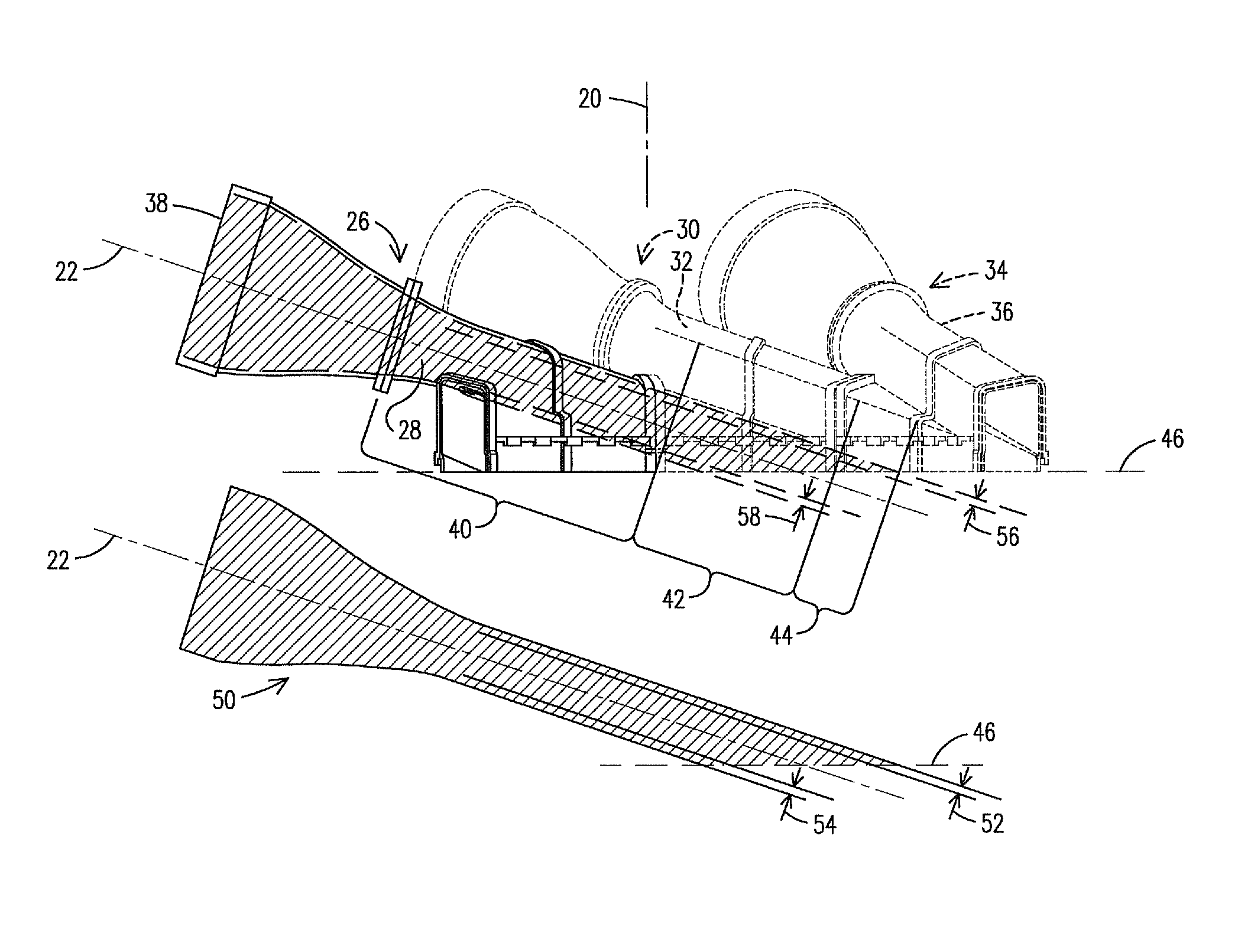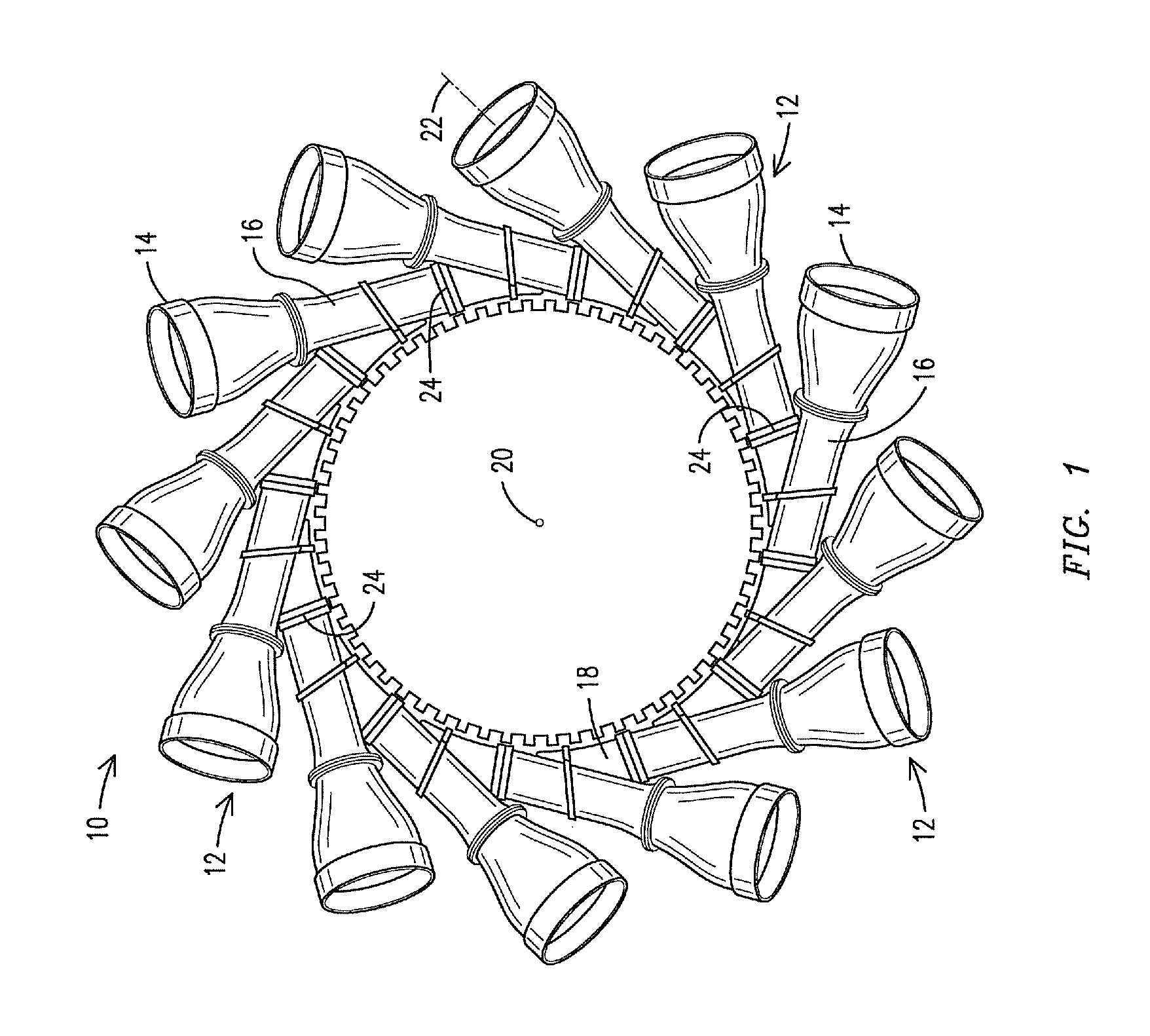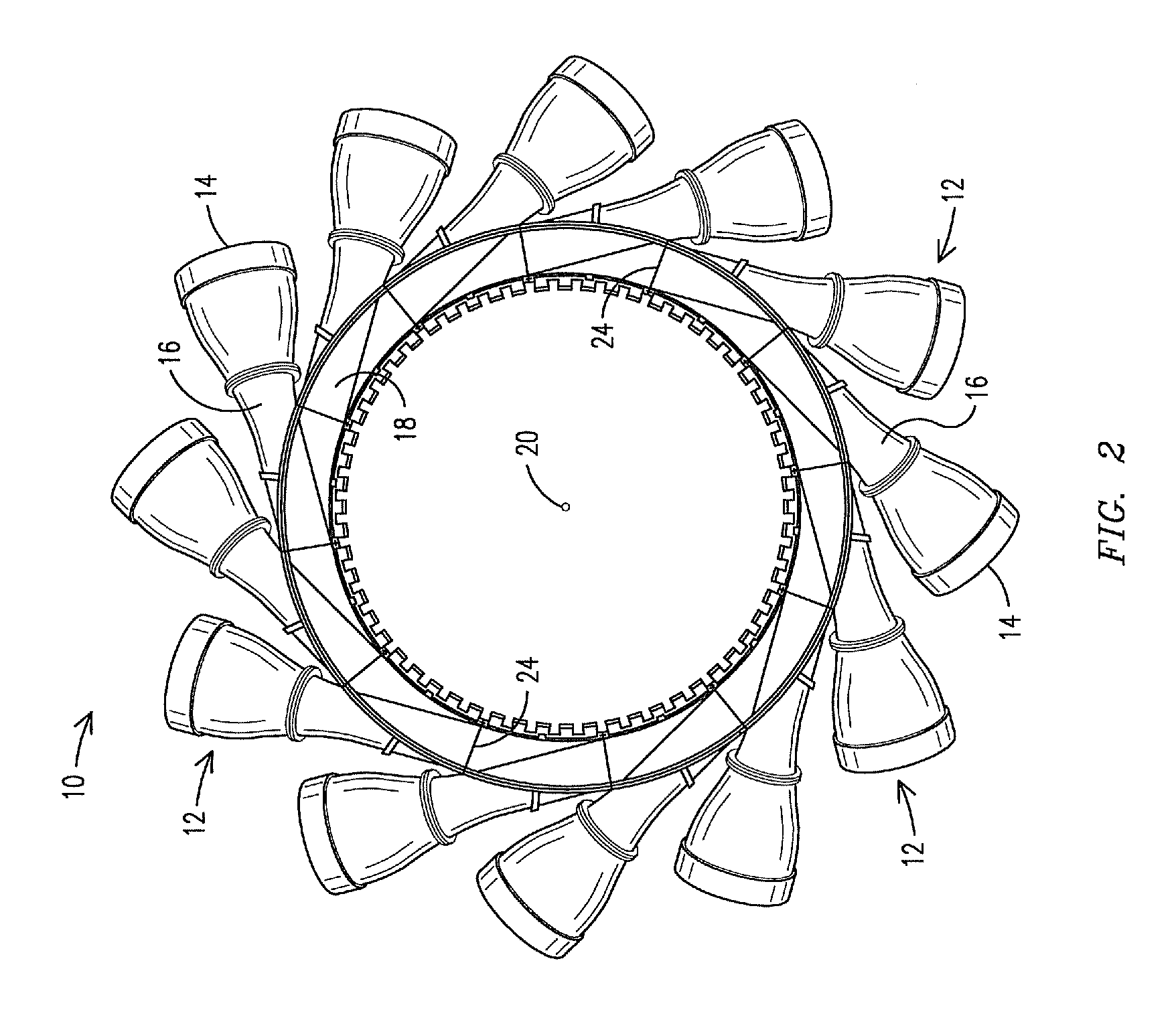Assembly for directing combustion gas
a technology of combustion gas and assembly, which is applied in the direction of machines/engines, stators, lighting and heating apparatus, etc., can solve the problems of increasing cold air leakage into the hot gas path through seals, reducing the amount of energy present, and requiring substantial cooling
- Summary
- Abstract
- Description
- Claims
- Application Information
AI Technical Summary
Benefits of technology
Problems solved by technology
Method used
Image
Examples
Embodiment Construction
[0021]The inventors of the present system have designed an innovative arrangement, made of multiple, modular, interchangeable, flow directing assemblies. One such assembly is identified by the trademark NOVA-Duct™ by the assignee of the present invention. The combustor cans of the gas turbine combustor have been reoriented to permit the use of an assembly of components that direct individual gas flows from the combustor cans of a can annular combustor of a gas turbine combustion engine into a singular annular chamber immediately upstream and adjacent the first row of turbine blades. The inventors of the present system observed that prior configurations for delivering flows of can-annular combustors to the first row of turbine blades kept each flow separate and distinct from the other flows all the way to the first row of turbine blades. As a result, between each flow about to contact the first row of turbine blades there is a gap, or trailing edge, where there is reduced flow delive...
PUM
 Login to View More
Login to View More Abstract
Description
Claims
Application Information
 Login to View More
Login to View More - R&D
- Intellectual Property
- Life Sciences
- Materials
- Tech Scout
- Unparalleled Data Quality
- Higher Quality Content
- 60% Fewer Hallucinations
Browse by: Latest US Patents, China's latest patents, Technical Efficacy Thesaurus, Application Domain, Technology Topic, Popular Technical Reports.
© 2025 PatSnap. All rights reserved.Legal|Privacy policy|Modern Slavery Act Transparency Statement|Sitemap|About US| Contact US: help@patsnap.com



